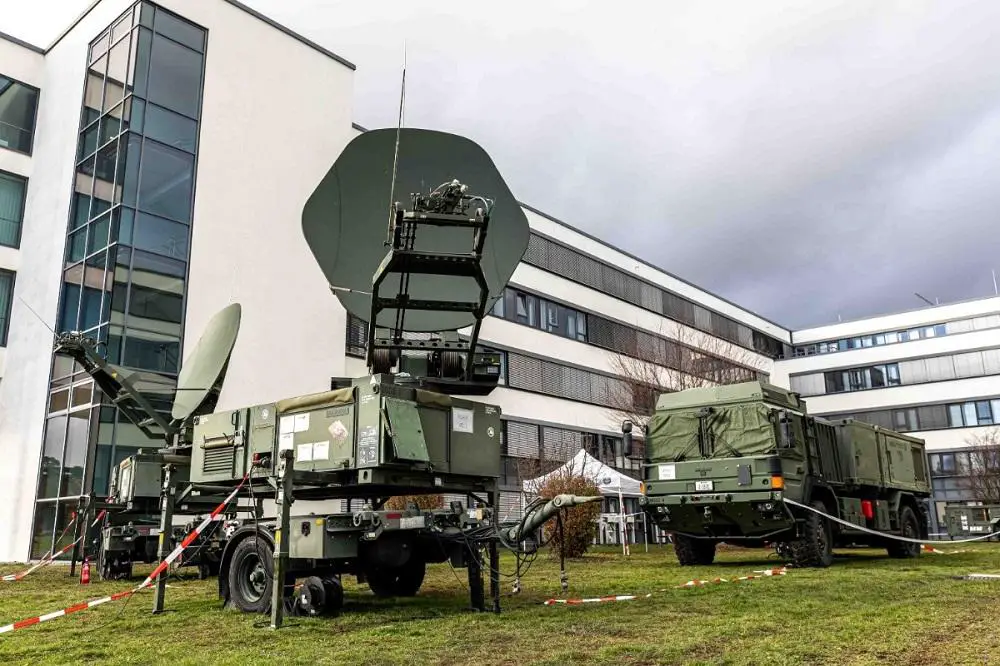For the first time, NATO’s Alliance Ground Surveillance Force (NAGSF) has deployed their Mobile General Ground Station or MGGS outside Italy testing the Force’s expeditionary capability to exploit the data collected by the RQ-4D Remotely Piloted Aircraft (RPA) at a remote site. Allied Air Command Chief of Staff Major General Gianluca Ercolani, Italian Air Force, and Deputy Chief of Staff Brigadier General Christoph Pliet, German Air Force, visited the 24-strong NAGSF detachment who set up camp inside the perimeter of HQ AIRCOM. The detachment arrived on November 10 via commercial road convoy, set up the system and established connectivity. Until November 22, the team of NAGSF experts, supported by contractor technicians linked up with the RQ-4Ds during reconnaissance flights along the eastern flank tracking its operation and exploiting and transferring collected data.
“This is an excellent demonstration of NAGSF’s ability to deploy a mobile exploitation element; I am impressed by the capability of the team to link up with the RQ-4D RPA in flight and exploit the collected data, making it available on-site,” said AIRCOM COS MG Ercolani. “From our operational perspective, this deployment greatly helps NATO’s procedures to collect, process and distribute intelligence, surveillance and reconnaissance results within our ogranisation and with the Allies – even out of a remote location,” he added.
“The purpose of the deployment to Ramstein is to achieve a checkmark on the Force’s way to NATO Alliance Ground Surveillance enhanced initial operational capability,” said the deployment commander, U.S. Air Force Captain Jacob Sanborn. “We simulate exploitation of the data our RQ-4D RPA gather in flight and make it available to the local ground force commander in the form of basic intelligence products. And we relay the information to our Main Operating Base at in Sigonella Italy for further distribution,” he said, describing the process and purpose of the deployment.

NAGSF operates five RQ-4D RPAs out of the Force’s Main Operating Base at Italian Air Force Base in Sigonella, where the Force collects intelligence, surveillance and reconnaissance data, processes it and distributes it to all Allies. The ground segment consists of several ground stations in fixed, mobile and transportable configurations, able to provide data-link connectivity, data processing, exploitation capabilities and interfaces for interoperability. The ground segment provides an interface between the AGS core system and a wide range of command, control, intelligence, surveillance and reconnaissance (C2ISR) systems. Using several NATO and US networks, it interconnects with multiple deployed and non-deployed operational users, as well as with reach-back facilities away from the surveillance area.
















